Luxury sales are declining globally, but why are shoppers in Southeast Asia still splurging?
As luxury demand dampens in traditional strongholds like China and the US, Southeast Asia is emerging as a surprising bright spot, driven by rising affluence, tourism and a more intentional approach to indulgence.
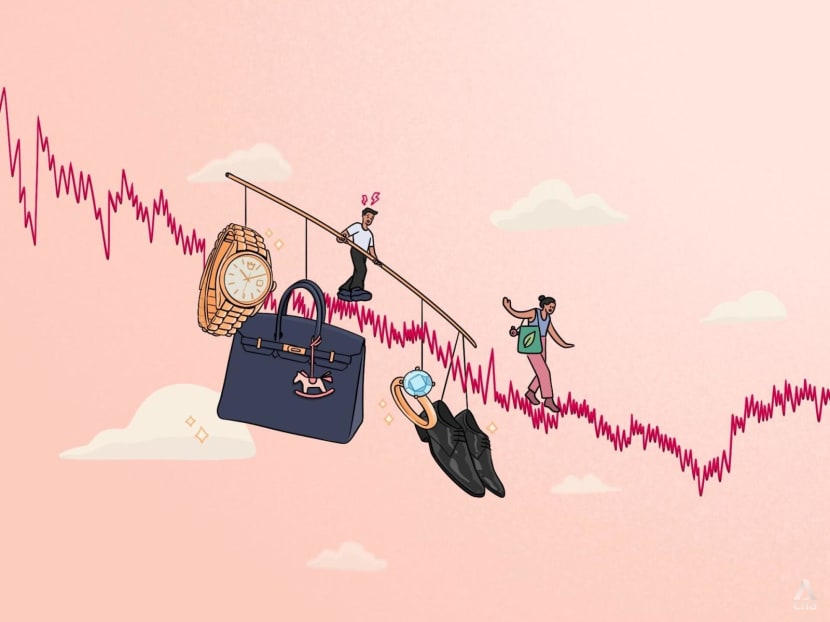
The global luxury market is facing its largest slump in over 15 years. (Illustration: CNA/Nurjannah Suhaimi)

This audio is generated by an AI tool.
For Ms Teng Jiayuan, 32, a Chinese citizen living in Shanghai, the thrill of buying her first Chanel Classic Flap bag in her late 20s was immediate but short-lived.
Back then, she was drawn to the brand’s timeless appeal. At that time, Ms Teng, who works in the luxury sector, was obsessed with designer logos and paid close attention to how others styled and carried their luxury goods.
But after finally handing over a significant chunk of her savings to own the piece, Ms Teng eventually found herself questioning whether the 46,800 yuan (US$6,500) purchase price was worth it.
"It satisfied my vanity for a moment. But emotionally, I didn’t feel truly fulfilled. The bag didn't fit my lifestyle either because it wasn’t practical to carry it to work every day," she told CNA TODAY in Mandarin.
The bag soon ended up in her closet, barely used.
Ms Teng, who also owns other luxury goods such as clothes and accessories, said there used to be a certain thrill in using luxury items to present herself a certain way, to draw admiration or even envy.
"But when I thought about my actual lifestyle – how I love fitness, reading and just being laidback – I realised this bag didn’t really bring me joy. It was a hard blow to my bank account."
With that realisation came a change in her shopping habits. Ms Teng said she rarely shops for luxury these days, opting instead for wellness classes, short trips, or styling what she already owns – things that bring her long-term emotional satisfaction.
Another luxury consumer from Shanghai, who wanted to be known only as Michelle, recalls a similar shift. Now 49, the account manager once saw luxury goods as status symbols. Buying one or two designer bags a year was the norm for her.
"My belt had to be Celine, my pen Montblanc, and I collected every Tiffany silver jewellery series."
But Ms Michelle gradually grew disenchanted. She recalled her last designer purchase, a Dior Saddle bag, which she now sees as being more style than substance.
"I probably used it three times. It looked good, but couldn’t even fit a phone and a makeup pouch."
Asked if it was practicality that ultimately led her to cut down her spending on luxury goods, Ms Michelle said the shift was more psychological than financial.
In the past, she was drawn to the intangible value of luxury – the self-worth and identity such purchases seemed to symbolise. "But now, I don’t need that validation," she said.
"Luxury will always be part of my life, but I now approach it with a calmer, more intentional mindset," she added.
"At this stage, real luxury means having the freedom to spend my time as I choose, and investing in experiences and well-being, like working with a personal trainer, staying in a luxurious hotel or going on meaningful trips."
Across the globe, these shifting values resonate with Ms Yasmeen Khan, a 31-year-old founder of a financial literacy platform in Canada. As her income grew, she said she felt increasing pressure to signal her success to the world through luxury purchases.
But when she paused to reflect, she realised the urge was not rooted in personal joy or values.
“Once I accepted that my worth doesn’t come from what I own, I stopped feeling the desire to purchase luxury.
"I started putting more energy into saving, investing and building something more important to me than material things, such as personal wellness and creating new memories with my children," said the mother of three.
These mindset shifts reflect a broader trend unfolding across the global luxury market, which is now facing significant turbulence amid more complex times.
Economic pressures, such as inflation, job insecurity and slower post-pandemic recoveries, have dampened consumer confidence in traditional markets such as China, North America and Europe, said experts.
But the current luxury slowdown also signals a deeper change in consumer psychology, they told CNA TODAY.
In China, a protracted property slump and rising "luxury shame" have made overt displays of wealth less appealing, while in the West high living costs are prompting aspirational buyers to pull back, they said.
Industry experts also pointed to "luxury fatigue", a growing sense that rising prices are no longer justified by the quality or meaning they offer.
Increasingly, the younger generations, especially Gen Z, are redefining what luxury means to them, placing more emphasis on individuality, values and emotional resonance than on heritage or brand prestige.
The question now is how luxury brands must evolve – not just to weather this downturn, but to stay relevant in a world where value is being redefined on very different terms.
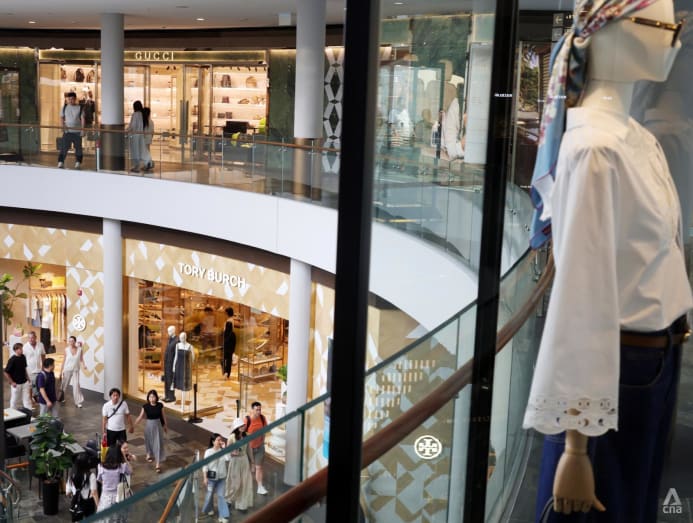
LUXURY'S BIGGEST SLUMP IN 15 YEARS
Luxury is no stranger to downturns during economic uncertainty.
However, this time, the international luxury sector is facing its greatest setback in at least 15 years, amid rising economic turbulence and complex social and cultural shifts, according to global consultancy Bain & Company's Luxury Goods Worldwide Study.
The study, released in June 2025, noted that luxury spending worldwide is under increasing strain as consumer confidence weakens amid economic upheavals, geopolitical and trade tensions, currency fluctuations and financial market volatility.
This is particularly evident in the United States and mainland China – two of the world’s most important luxury markets – where demand has softened amid ongoing economic uncertainty.
Dr Junqiu Jiang, assistant professor of marketing at ESSEC Business School, said that in China, a prolonged property slump and job insecurity have hindered the post-COVID recovery. Coupled with youth unemployment and slower economic growth, this has led to a rise in what she calls "luxury shame".
"Many affluent Chinese now avoid flashy logo goods amid social sensitivities," she said.
Meanwhile, in the US and Europe, Dr Jiang noted that higher living costs and recession worries are causing aspirational shoppers to pull back.
Industry experts told CNA TODAY that the forces reshaping the market go beyond inflation and recession fears. A generational shift in values is transforming how consumers perceive the very concepts of status, spending and luxury.
Bain & Company highlighted that luxury brands are also grappling with growing disillusionment among younger buyers, particularly those in Gen Z – loosely defined as the generation born from 1997 to 2012, and are aged 13 to 28 this year.
This shift is prompting a reevaluation of the luxury sector’s long-held price-to-value balance, as younger consumers rethink what luxury truly means to them.
Dr Jiang said that younger consumers are not as eager to flaunt wealth the way their predecessors did, preferring instead to showcase the quality of their life and personal choices.
She added that Gen Z is less concerned with logos and more focused on whether a brand aligns with their values and identity, such as sustainability or social impact, and this shift is reflected in their shopping habits.
Dr Matthias Fuchs, assistant professor of marketing at EHL Hospitality Business School in Switzerland, said that the lower-end, aspirational segment of the luxury market is currently taking the biggest hit.
It is worth noting that in contrast, high-end brands that have focused on nurturing long-term relationships with ultra-wealthy clients, such as Hermes, are still performing strongly, he said.
Hermes sales surged by 15 per cent in 2024 to €15.2 billion (US$17.8 billion), The Economist reported in April.
On what purchases are considered more "worth it" these days, the experts told CNA TODAY that consumers are increasingly seeking meaningful experiences and emotional engagement with luxury brands.
Ms Blair Zhang, senior research analyst at market intelligence agency Mintel, said these consumers now place greater value on the psychological satisfaction these experiences provide, rather than on traditional status symbols.
"Experiential luxury, such as travel, fine dining and exclusive events, has become a central focus, particularly in the post-pandemic era, as people seek deeper, more memorable interactions with brands."
Environmentally conscious consumers are also increasingly interested in sustainable practices, said Ms Zhang, including second-hand luxury and other initiatives aimed at minimising waste.
"Buying pre-owned items, renting and reselling are becoming more mainstream, particularly among those who prioritise long-term value retention and environmental responsibility."
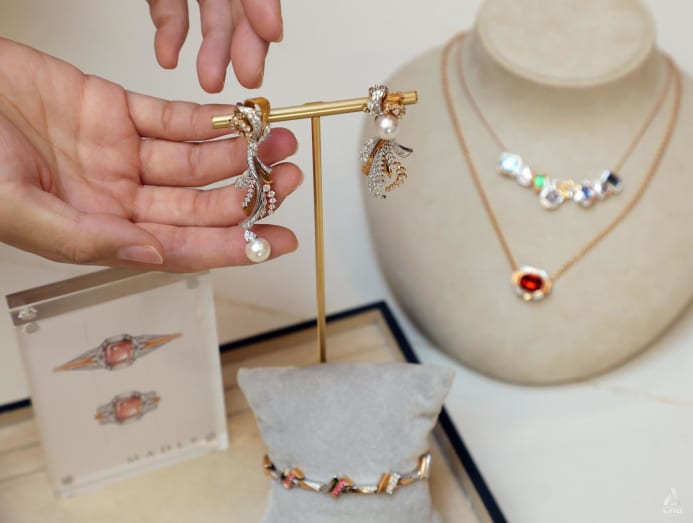
SOUTHEAST ASIA IS AN OUTLIER
But while the global luxury market wrestles with slower demand, Southeast Asia is proving to be a notable exception, along with the Middle East and Latin America, the Bain & Company study stated.
In Southeast Asia, Singapore and Indonesia are leading the growth, with the Philippines and Vietnam following behind.
Market watchers CNA TODAY spoke to highlighted the region’s significant growth potential, driven by robust economic expansion, tourism and rising consumer wealth.
Ms Fflur Roberts, global insight manager of luxury goods at data analytics company Euromonitor International, said that emerging and developing economies are becoming the primary drivers of luxury growth, with sales projected to rise by 21 per cent over the next five years.
"Markets like India, Thailand, Vietnam and the Philippines are leading this expansion, supported by rising wealth, strong consumption and investment in luxury retail and travel infrastructure," she said.
In Singapore, luxury sales are projected to rise 7 per cent to S$13.9 billion in 2025 from 2024, according to Euromonitor International data cited by Bloomberg.
In 2024, the Republic recorded the highest year-on-year growth in luxury sales among Asian markets tracked by the analytics firm, second only to Japan. Total sales are projected to return to the pre-COVID peak of S$14.7 billion in 2026.
Ms Roberts attributed this resilience to Singapore’s affluent and diverse population – it is home to more than 300,000 individuals with net wealth exceeding US$1 million, a cohort expected to surpass 400,000 by 2030.
"The country’s affluent population spans both mature and younger age groups, reflecting a rich cultural and ethnic diversity. This positions Singapore as a regional leader, especially as neighbouring markets and global giants like China and the US experience more subdued growth."
Ms Roberts added that Singapore also enjoys the highest disposable income per household in the Asia Pacific and near-universal internet penetration, creating a digitally connected, tech-savvy consumer base – ideal conditions for luxury brands embracing innovation.
Indeed, despite economic uncertainty and shifting global tastes, brand and marketing consultant Carmelita Lumempouw, 29, still finds joy and purpose in buying luxury goods.
On average, the Indonesian national based in Singapore makes about three to four purchases a year, ranging from jewellery to shoes and handbags.
“It’s not about having a huge collection. Many of my purchases mark personal milestones, and they are things I’ll keep for years," she said.
For Singaporean banker Sharene Ang, 32, luxury bags initially served as status symbols but are now more about personal satisfaction.
"I dress very simply, so a nice bag is the laziest way to elevate an otherwise boring outfit," she said. "But now I just enjoy how a good-looking bag makes me feel."
With housing and a car already settled, Ms Ang and her husband, 36, now spend selectively on bags, watches and shoes, balancing indulgence with financial prudence.
Beyond local consumption, experts also noted that luxury tourism is reinforcing Singapore’s status as a regional shopping hub, particularly for high-end clients who continue to spend generously on luxury goods.
Euromonitor’s Ms Roberts said that international tourists currently account for 34 per cent of personal luxury goods sales in Singapore, down from 40 per cent before the pandemic.
She added that a full recovery is expected by 2026. Tourist spending has already surged 242 per cent since 2022, driven largely by the return of inbound travel, especially from China.
Even with a slowdown in China’s domestic luxury market, Chinese tourists have not stopped shopping abroad, said Ms Sonya David, head strategist at marketing communications agency network Dentsu.
She noted that destinations like Japan, Thailand, Vietnam and Singapore have become increasingly attractive, thanks to factors such as the weaker yen, the expansion of luxury flagships and appealing duty-free benefits.
"Thailand, for instance, has heavily invested in building its reputation as a luxury shopping destination, especially in Bangkok. There’s an entire mall, Icon Siam, that’s dedicated to luxury retail," she said.
"And many other malls are coming up in the city centre, designed specifically to be luxury shopping hubs. Some are even part of integrated townships now being developed in Bangkok."
The Bangkok Post reported that Thailand's luxury retail market is valued at US$4.4 billion and is expected to grow around 5 per cent annually through 2028, positioning the country as a regional leader in luxury retail within Southeast Asia and seventh overall in the Asia Pacific region.
Ho Chi Minh City in Vietnam is also emerging as a luxury shopping destination. Both cities, said Ms David, are not only attracting international travellers but are also increasingly catering to local luxury consumers.
"And we shouldn’t overlook the fact that people in these markets are now buying goods that were previously unavailable in their countries," she said.
"Flagship collections that used to go to European cities first are now arriving in Bangkok and Ho Chi Minh first as well."
On the business front, while Singapore’s luxury spending remains resilient in a slower global market, some brands are seeing quiet shifts in the way consumers engage with luxury.
"We’ve noticed clients becoming more considered. They’re doing their research, asking more questions and being mindful about what they choose to splurge on," said jeweller Maddy Barber, founder of homegrown luxury jewellery brand Madly Gems.
"But I wouldn't say they're spending less. In fact, we’ve had more high-value purchases in the past six months than in any comparable period before.
"Clients are simply spending more intentionally. And that’s a good thing."
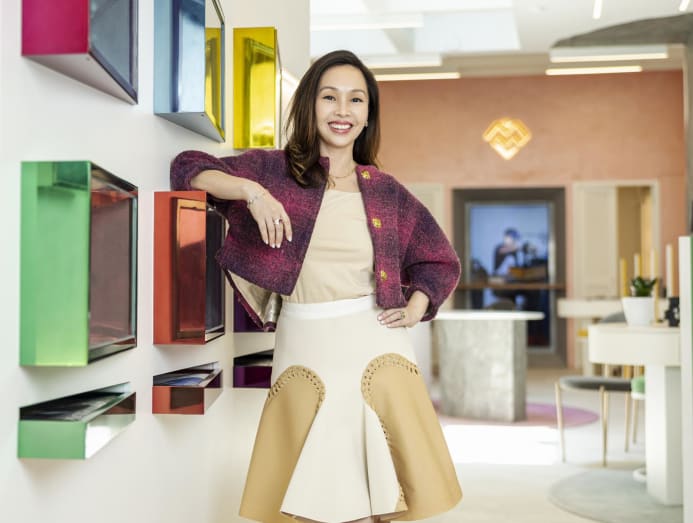
Ms Barber, a former radio presenter, observed that consumers today are not swayed by labels such as "handmade" or "high-quality" alone.
"Those things still matter, but what truly draws people in is emotional connection. They want pieces that feel honest, that reflect who they are. People choose brands that make them feel something real."
In her experience, there has been no generational difference in how customers are thinking about luxury purchases, Ms Barber added.
"It’s less about age and more about mindset. A 28-year-old who values uniqueness is just as likely to commission a custom piece as a 55-year-old marking a legacy."
A similar shift towards more considered, intentional spending is unfolding in the watch market.
Mr Darren Yeoh, sales manager at luxury watch dealer Watch Exchange, said Singaporeans are still spending, but they're approaching purchases with more thought, whether it’s buying their first timepiece, marking a milestone, or choosing watches as meaningful gifts.
"The demographic of our clientele is getting younger. I only started collecting watches in my early 30s, but now I’m seeing people as young as 25 or 26 starting out, often with more accessible luxury brands under S$10,000."
Watches, too, are being reimagined as gifts with emotional value, Mr Yeoh added.
"We’re seeing more couples gift each other Rolexes for weddings instead of the traditional si dian jin," he said, referring to the customary set of gold jewellery traditionally given by the groom’s family to the bride.
Beyond gifting, another shift Mr Yeoh has observed is in gender dynamics.
"Some dealers used to avoid stocking women’s models because demand was low. But since late 2023, interest has picked up and we’re seeing more female clients who know what they want."
Today, about 90 per cent of Watch Exchange’s customers are locals, and 10 per cent are tourists, mainly from Malaysia and Indonesia. "These buyers continue to shop in Singapore even if prices are just slightly lower, because they trust the regulation and authenticity here," said Mr Yeoh.
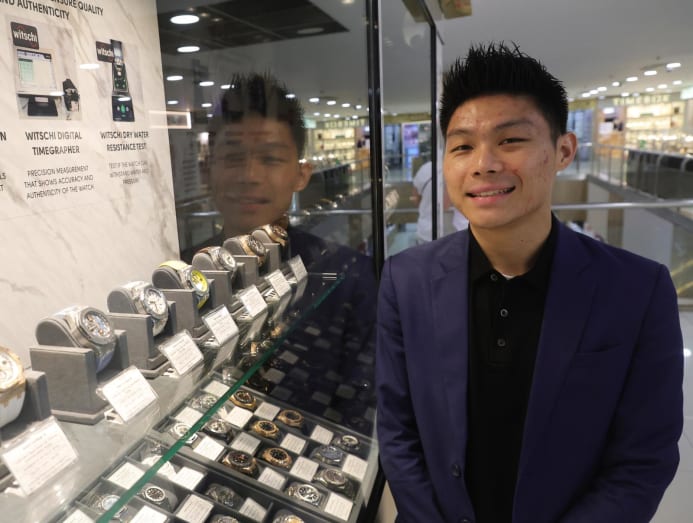
HOW BRANDS MUST EVOLVE TO KEEP UP
In response to changing consumer values and slowing sales, industry experts told CNA TODAY that luxury brands must move beyond transactional relationships and focus on creating emotionally resonant experiences that align with consumers’ values to build loyalty.
Brands are also expected to be transparent about the origins of their products and their manufacturing processes, particularly in terms of sustainability.
Ms David from Dentsu said that pop-ups, such as exhibitions, installations, cafes and restaurants, are a good way for brands to connect with customers beyond just selling products.
"For instance, Louis Vuitton launched a fine-dining restaurant with a Michelin-starred chef in Bangkok called Gaggan at Louis Vuitton. Burberry partnered with a cafe in London in 2023 to serve breakfast. These experiences don’t push merchandise – they offer cultural touchpoints."
She also pointed to Gentle Monster, a luxury eyewear brand that in 2024 hosted immersive exhibitions in several major cities including Shanghai and Tokyo.
"The exhibitions often had queues every day – not to sell eyewear, but to immerse people in the brand’s tech-forward identity. These experiences create emotional engagement and long-term affinity, not just immediate sales."
As luxury brands seek to expand into new markets in Southeast Asia and South Asia, Ms David stressed that storytelling is a key strategy.
Some effective strategies, especially in China, involve leveraging Chinese heritage and pride, where brands have released products that celebrate these elements, resonating strongly with local consumers, she said.
For instance, Loewe's 2022 holiday collection featured bags inspired by Chinese monochrome ceramics from the Ming and Qing dynasties.
Fendi partnered with artisans from the Yi ethnic group to create a baguette bag with traditional embroidery and silverwork, while Dior incorporated ronghua – a velvet flower craft dating back to the Tang Dynasty – into its men’s couture.
"(Brands are) now applying the same approach in markets like India, which they’re trying to unlock," said Ms David.
In May 2025, Bollywood star Alia Bhatt made waves at the 78th Cannes Film Festival in France, which she attended dressed in a sari made by Gucci.
The sari – an intricate piece featuring the Gucci logo woven into the design – was the first made by the Italian brand as part of its push into the Indian market, observed Ms David.
Partnering with prominent local conglomerates is also important for luxury labels looking to gain a stronger foothold in markets such as the Philippines, Thailand and India, she added.
For instance, luxury brands are increasingly setting up flagship stores at integrated resorts coming up in some of the biggest holiday destinations in the Philippines, particularly on the outskirts of Manila, which place a strong focus on destination shopping.
"It's quite similar to (The Shoppes at) Marina Bay Sands in Singapore, where flagship boutiques are integrated into the hotel complex, offering an all-in-one luxury experience."
Mr Guillaume Sachet, partner in corporate transformation at professional services firm KPMG in Singapore, said the company is seeing a growing divide in the luxury market. High-spending consumers continue to seek exclusivity, heritage and bespoke experiences, while aspirational buyers are becoming more value-conscious, often engaging through entry-level products or the pre-owned market.
To manage this gap, he said that luxury brands are taking a tiered approach by maintaining exclusivity for their core clientele, while offering more accessible options that reflect the values of younger or aspirational consumers.
The rise of resale platforms, digital memberships and curated experiences is helping bridge the gap. "However, the challenge lies in maintaining brand integrity," Mr Sachet said.
"Overextending accessibility risks diluting the brand’s prestige, while focusing too narrowly on elite segments may alienate future growth audiences.
"Striking the right balance is essential. Brands that can uphold their heritage while evolving with consumer expectations will be best positioned to navigate this dual-track market."
As for luxury watches, Dr Fuchs of EHL Hospitality Business School said the Asia Pacific market is slowing down alongside the broader luxury sector, but with some notable differences.
"Many high-end luxury watch brands are independent and take a long-term approach. Unlike many large luxury groups in fashion and jewellery, they have resisted the temptation to increase production volumes despite growing demand over the last decade."
He added that luxury watch brands continue to perform well because while latent demand may be shrinking, the demand they actually serve remains stable or is even growing, depending on each brand’s supply.
"Brands like Audemars Piguet have used this period to enhance customer experience through more controlled retail environments."
An example of this is Audemars Piguet's AP House, an "experiential concept store" first introduced in 2017. AP House Singapore, located at Raffles Hotel, is the 22nd AP House location globally and the first in Southeast Asia.
These stores foster interaction among collectors and enthusiasts, offering champagne, workshops and lounge-like settings to leave customers with positive memories, even if they leave without a purchase.
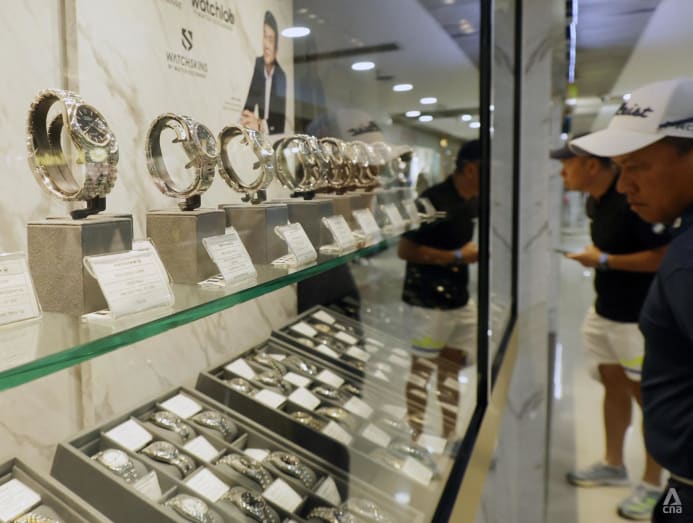
GEN Z'S INFLUENCE ON THE FUTURE OF LUXURY
As the global luxury market weathers this slowdown, one question looms: Will consumers return once economic conditions improve, or has the very meaning of luxury been permanently redefined?
Industry watchers said the downturn is partly a cyclical correction from overexpansion, but also signals a lasting shift in consumer values towards subtlety, experiences and mindful consumption over status for its own sake.
While past downturns typically saw cutbacks from aspirational consumers but stable spending from the wealthy, experts are divided on whether that holds true this time around.
Euromonitor’s Ms Roberts maintains that today’s pullback continues to be driven mainly by aspirational buyers, with spending by traditionally stable and affluent consumers remaining resilient.
But Ms Laurel Gu of Mintel noted that the current slowdown is notable for its broader reach and the clear signs of restraint even among high-net-worth individuals.
"In the current environment, while aspirational shoppers remain the most sensitive to economic headwinds, there is clear evidence that inflation, high interest rates, and rising costs for essentials like housing are also impacting the spending behaviours of affluent consumers and even those in the high-net-worth segment," she said.
According to her company's research, about one-third of overall consumers, and nearly as many in the high-net-worth segment, report making fewer luxury purchases due to inflation, she said.
This suggests a broader cooling of demand across income segments, even as the ultra-wealthy continue to anchor the market, Ms Gu added.
Still, fresh momentum is emerging in specific pockets of the market, indicating where luxury may be headed next.
Dr Jiang of ESSEC Business School said that one standout growth area is luxury beauty, as high-end cosmetics and fragrances are gaining popularity as relatively affordable indulgences.
"Brands have been innovating like crazy in this space," she said, adding that this trend is also reflected in Bain & Company's findings, with beauty, eyewear and jewellery cited as bright spots driven by product innovation.
"A Gen Z consumer who might hold off on a S$5,000 bag could still splurge on a S$200 artisanal perfume or a luxury lipstick for a little taste of indulgence."
Another buoyant category is fine dining and luxury food and beverage experiences, said Dr Jiang.
"Coming out of the pandemic, many affluent consumers are making up for lost time by splurging on gourmet encounters – from exclusive chef’s table dinners to members-only dining clubs."
She added that global sales in fine dining grew about 8 per cent, signalling a broader shift towards experiential luxury.
Meanwhile, the resale or secondary market for luxury goods is booming. Dr Jiang said that as shoppers become more value-conscious, many are turning to curated secondhand platforms to buy or resell luxury items.
"We’ve seen 'pre-loved' luxury go mainstream, largely due to Gen Z and millennials normalising it. They love the sustainability aspect and the thrill of finding rare vintage pieces."
A Gen Z luxury enthusiast, for instance, might seek out a 1990s Gucci Jackie bag on a resale site rather than buy new, drawn by both its uniqueness and ethical appeal.
The trend has gained such momentum that even major brands are responding, with some launching their own official resale platforms or "archive" collections.
Ms Elizabeth Layne, chief marketing officer of US-based luxury resale platform Rebag, told CNA TODAY that resale demand remained robust in 2024, with resale value retention up across nearly all brands.
She attributes this to rising primary market prices, which drove consumers to the secondary market for better value even amid broader economic uncertainty.
Rebag’s 2024 Clair Report highlighted standout performers such as the Hermes Sellier Birkin. In 2023, amid the global luxury downswing, the bag was commanding 198 per cent of its original sale value.
That figure is now up to 250 per cent, meaning that it's now selling for 2.5 times its original retail price.
Another bag continuing to outdo itself is the Louis Vuitton Neverfull, which in 2024 was selling at 158 per cent of its original retail price – up 22 percentage points from 2023.
Across all these trends, one common thread remains: The influence of Gen Z.
Dr Jiang said that the generational shift does not necessarily mean Gen Z and younger millennials are uniformly rejecting traditional luxury labels, such as Gucci, Chanel or Louis Vuitton. "Instead, they pressure these brands to evolve and broaden the definition of luxury."
Luxury brands would do well to pay attention to these growing segments, trends and evolving definitions, because that’s where the momentum is, even as some traditional categories cool off, she added.
"And the brands that respond by championing diversity, sustainability and creativity are being rewarded with loyalty from Gen Z."













